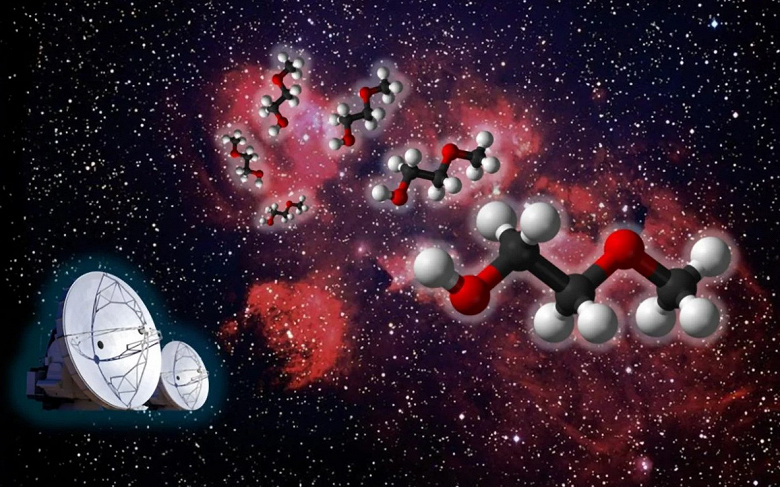New discovery expands knowledge of complex molecules in the Universe
A team of researchers led by Professor Brett McGuire from the Massachusetts Institute of Technology has identified the presence of a previously unknown molecule in space. The results of the work were published in The Astrophysical Journal Letters.
Graduate student Zachary Fried, the lead author of the publication, combined the findings to achieve this goal with the participation of researchers from France, Florida, Virginia and Copenhagen.
«Our group seeks to understand what molecules are present in the regions of star formation and planetary systems, – Fried explains. – This allows us to trace the development of chemical processes at different stages of star formation. To do this, we study the spectra of molecules – their unique «fingerprints». To detect a new molecule in space, it is necessary to simulate its spectrum in laboratory conditions in advance, and then look for matches using telescopes».
The team used machine learning to select promising target molecules. In 2023, one of these models proposed to focus on the molecule 2-methoxyethanol.
«Among the «methoxy»-molecules previously discovered in space, such as dimethyl ether, methoxymethanol, ethyl methyl ether and methyl formate, 2-methoxyethanol is the largest and most complex» , – Fried notes.
To study this molecule using a radio telescope, the team first needed to measure and analyze its rotational spectrum on Earth. The scientists combined experiments from the University of Lille, New College of Florida and the MIT laboratory to measure the spectrum over a wide range of frequencies from microwave to submillimeter waves (8-500 GHz).
The data obtained allowed us to search for the molecule using observations of the Large Millimeter/submillimeter Array ALMA in the star forming regions NGC 6334I and IRAS 16293-2422B. Members of McGuire's team, along with scientists from the National Radio Astronomy Observatory and the University of Copenhagen, analyzed the ALMA observations.
«As a result, we detected 25 lines of 2-methoxyethanol that coincided with the molecular signal in the direction of NGC 6334, which made it possible to detect this molecule in this source, – says Fried. – This helped to determine its physical parameters, such as content and excitation temperature, and also to explore possible routes of formation from known interstellar precursors».
Discoveries like this help to better understand the development of molecular complexity during the process of star formation. 2-Methoxyethanol, consisting of 13 atoms, is quite large by interstellar standards – as of 2021, only six species of molecules larger than 13 atoms have been discovered outside the solar system, many of which were discovered by McGuire's group. Moreover, they all had a ring structure.
«Observations of large molecules and the subsequent determination of their content allow us to expand our knowledge of how efficiently such complex compounds can be formed and with the help of what specific reactions they can be reproduced&ndash ; Fried notes. «In addition, since we found this molecule in NGC 6334I, but not in IRAS 16293-2422B, we had a unique opportunity to study how the different physical conditions of these two sources may affect the chemical processes that occur».< /p>
This discovery contributes to the understanding of the formation of complex molecular compounds in star formation zones and expands the boundaries of knowledge of fundamental chemical reactions in space. Future research in this direction will help shed light on the origin of organic molecules that became the basis of life on our planet.

